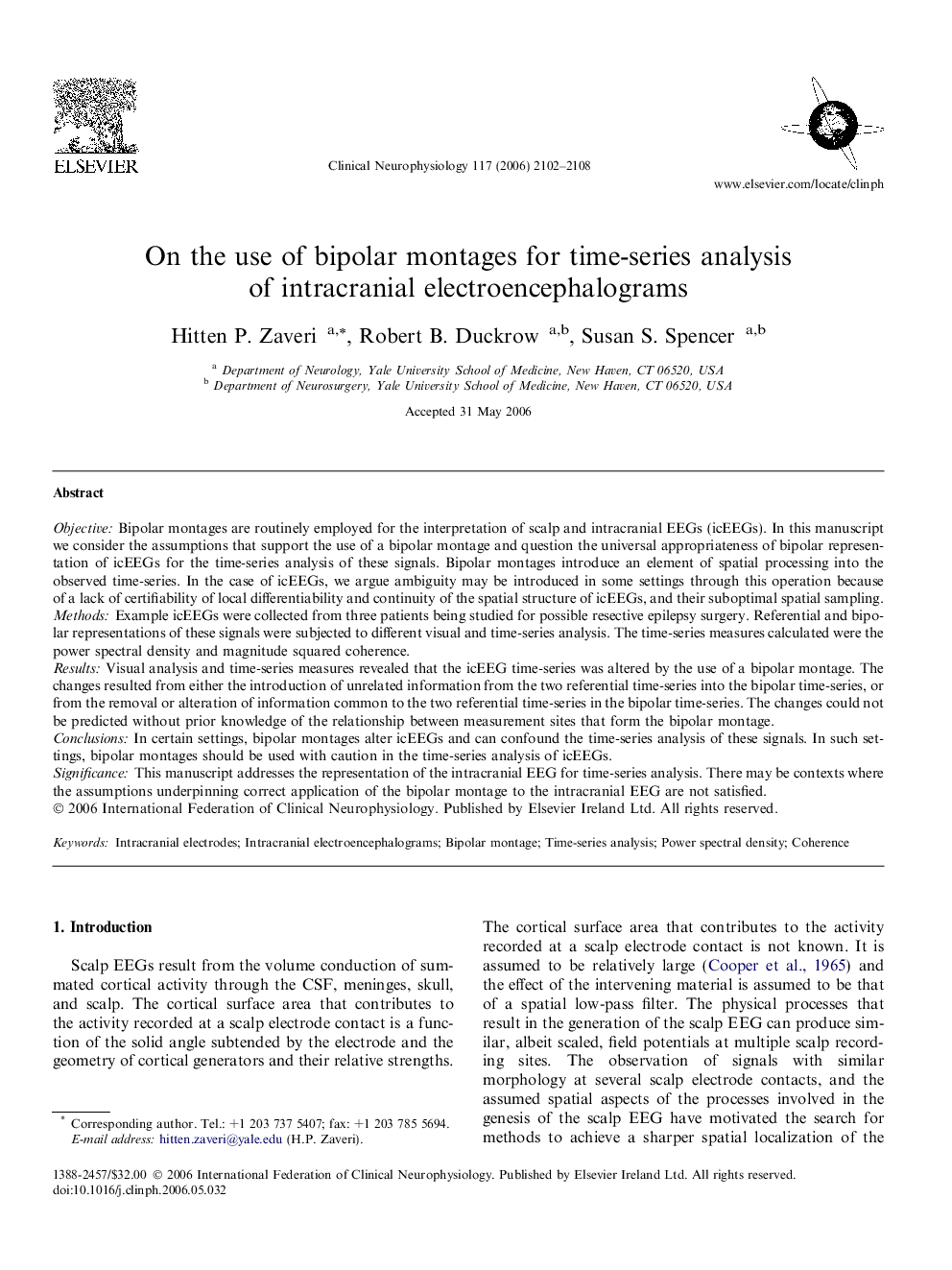| Article ID | Journal | Published Year | Pages | File Type |
|---|---|---|---|---|
| 3047828 | Clinical Neurophysiology | 2006 | 7 Pages |
ObjectiveBipolar montages are routinely employed for the interpretation of scalp and intracranial EEGs (icEEGs). In this manuscript we consider the assumptions that support the use of a bipolar montage and question the universal appropriateness of bipolar representation of icEEGs for the time-series analysis of these signals. Bipolar montages introduce an element of spatial processing into the observed time-series. In the case of icEEGs, we argue ambiguity may be introduced in some settings through this operation because of a lack of certifiability of local differentiability and continuity of the spatial structure of icEEGs, and their suboptimal spatial sampling.MethodsExample icEEGs were collected from three patients being studied for possible resective epilepsy surgery. Referential and bipolar representations of these signals were subjected to different visual and time-series analysis. The time-series measures calculated were the power spectral density and magnitude squared coherence.ResultsVisual analysis and time-series measures revealed that the icEEG time-series was altered by the use of a bipolar montage. The changes resulted from either the introduction of unrelated information from the two referential time-series into the bipolar time-series, or from the removal or alteration of information common to the two referential time-series in the bipolar time-series. The changes could not be predicted without prior knowledge of the relationship between measurement sites that form the bipolar montage.ConclusionsIn certain settings, bipolar montages alter icEEGs and can confound the time-series analysis of these signals. In such settings, bipolar montages should be used with caution in the time-series analysis of icEEGs.SignificanceThis manuscript addresses the representation of the intracranial EEG for time-series analysis. There may be contexts where the assumptions underpinning correct application of the bipolar montage to the intracranial EEG are not satisfied.
